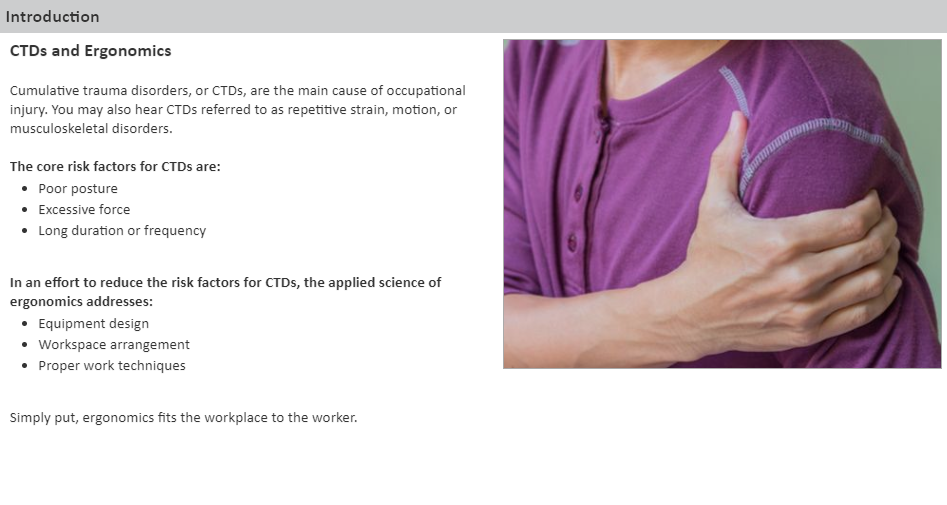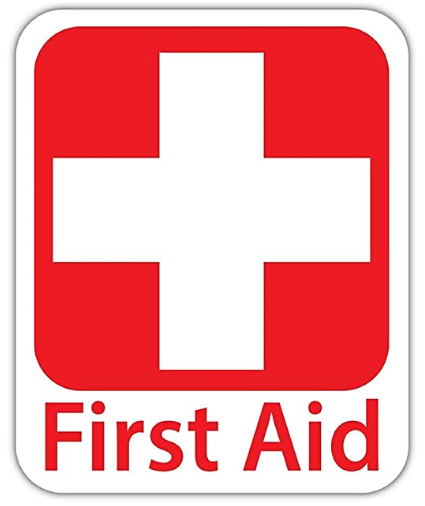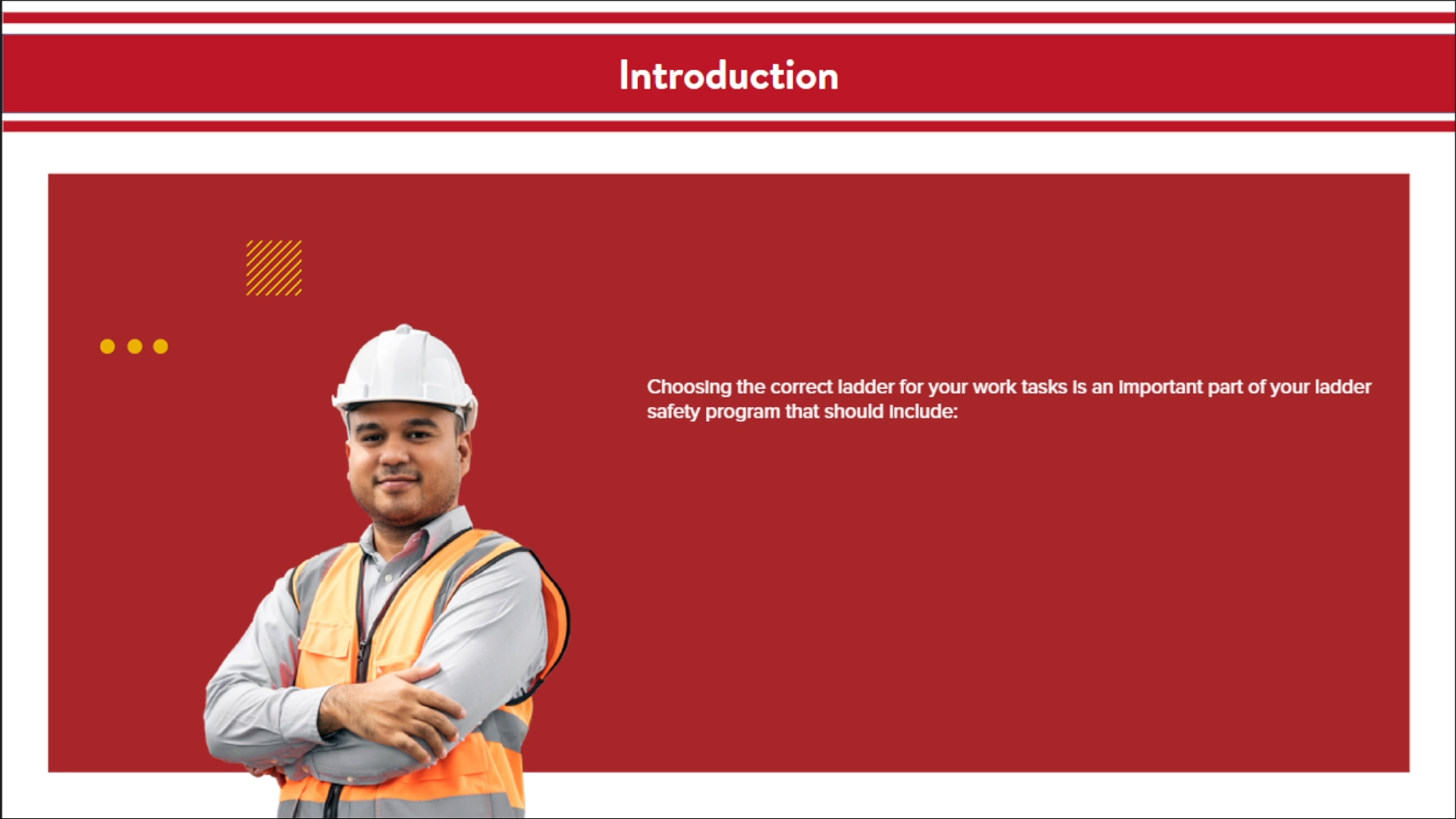Poor ergonomics can lead to cumulative traumatic musculoskeletal disorders (MSDs) that put strain on our bodies. There are very good reasons for accounting for the ergonomic health of your workforce, because musculoskeletal injuries, once developed, can keep people off of the job for life.
Industrial Ergonomics
Original price was: $11.99.$9.99Current price is: $9.99.
Description
Poor ergonomics can lead to cumulative traumatic musculoskeletal disorders (MSDs) that put strain on our bodies. There are very good reasons for accounting for the ergonomic health of your workforce, because musculoskeletal injuries, once developed, can keep people off of the job for life.
Statistics: Industries with the highest musculoskeletal disorders rates include health care, transportation, warehousing, retail, and wholesale trade and construction.
The term “ergonomics” refers to making the workplace conducive to the comfort and productivity of the employee. Applying ergonomic principles helps workers avoid on-the-job illness and injury and improves worker job satisfaction through measures that provide a greater comfort, helping people to perform assigned tasks more naturally.
Cumulative trauma disorders (CTDs) come from physical demands that exceed our maximum capacity; that put strain on tendons, muscles, nerves, joints, ligaments, cartilage or the spine; or that disregard environmental factors like heat, humidity, noise and glare which can cause stress. For example, think of young man who moves heavy, awkward furniture on a daily basis, with poor technique and disregard for or ignorance of future consequences of straining back muscles and bone beyond limitations. Eventually, the back will become sore and give out, jeopardizing the man’s livelihood and negatively impacting the employer’s workers compensation rating.
CTDs are the result of an accumulation of stress factors involving repetitive, forceful, or prolonged exertions; frequent or heavy lifting, pushing, pulling, or carrying of heavy objects; or prolonged awkward postures. Carpal tunnel syndrome is a commonly cited issue alleviated by a bit of attention to ergonomics.
There are ten general principles of ergonomics which are used to evaluate the “fit” of a work area. Some relate to changes the worker can make on his/her own while others suggest changes the employer could make.
- Work in a neutral posture. The spine has a natural “S” curve. When possible, maintain that natural curve, whether sitting or standing.
- Reduce excessive force. Use tools to help with pulling, pushing and lifting. Use boxes that have handholds.
- Keep your work tools in easy reach. Arrange your work area so that things you use often do not require a stretch to reach.
- Work at proper heights. When sitting, most work should be done at elbow height. A good example of this is working at a computer.
- Reduce excessive stressful motions. A simple way is to use power tools whenever possible. Evaluate the work situation and make changes to eliminate excessive repeated motions.
- Minimize fatigue and static load. Staying in the same position creates static load and leads to fatigue and cramping. Using tools to hold parts in place and changing your body position can reduce static load.
- Minimize the pressure of your body on other surfaces. For example, when you squeeze a tool, you are creating pressure points on your hands. Using a tool that is contoured to fit your hand or that has a cushioned grip lessens the pressure.
- Your work area must also be set up to have enough room so that you can work in a comfortable position without having your head, arms, elbows, knees or feet in unnatural or cramped positions.
- As you use your body to work each day, remember that we are meant to move, exercise and stretch. Your muscles need to be used and strengthened and your heart rate needs to be elevated on occasion. Be sure to change positions, stretch, and move often throughout the day.
- Maintain a comfortable environment.
Here are two easy tips: to maintain the “S” curve in your back when standing for long periods, it helps to put one foot on a footrest. When sitting, beware of relaxing into a “C” curve, which can put strain on your back. Good lumbar support in a chair can help maintain the proper curve in the small of your back.
When lifting, bending over in a “V” shape creates pressure on the back. If you must bend frequently to lift items, look for mechanical means to reduce the amount of bending you must do. Keep your neck aligned with the rest of the spinal column. Prolonged twisted and bent positions are stressful. Adjust equipment if necessary to allow your neck to be in its neutral position. Keep your elbows at their sides. Adjust the work area height if necessary. Keep your wrists in neutral position with the hand in the same plane as the forearm. Use tools that allow your wrist to assume this position.
Why SafetyNow?
Not all training is equal. With SafetyNow, learners and leaders will notice the difference in value:
- Quality: Professionally-researched and designed using the latest mobile and responsive technologies
- Convenience: Works instantly on any device, desktop or mobile
- Time savings: What learners need to know, not extra fluff or legalese
- Reporting: Consistent, instant compliance records available anytime
- Support: Customer and learner support included at no charge
- Recognizing the underlying principle of ergonomics in the workplace and core risk factors
- Learning the causes of CTDs – Understanding common types of cumulative trauma disorders
- Connecting warning signs and symptoms with solutions and actions
- Learning ergonomic principles
- Understanding the elements of an effective ergonomic health and safety program
- Any Learning Management System (LMS) Use with any SCORM, AICC, xAPI, TinCan, HTML5, or other LMS (learning management system).
- Any Device Desktop, laptop, tablet, or mobile phone – it simply works, everywhere.
- Engaging Professionally-developed, including an on-screen host and modern, easy-to-understand text, media, and voiceovers.
- Unlimited Attempts Each module can be taken as many times as required to get a passing grade. Unlike our competitor’s courses, if you get an answer wrong, you are redirected to the exact eLearning segment you struggled with… you don’t need to go through the entire module again, just the one part you need a refresher on.
Only logged in customers who have purchased this product may leave a review.













Reviews
There are no reviews yet.